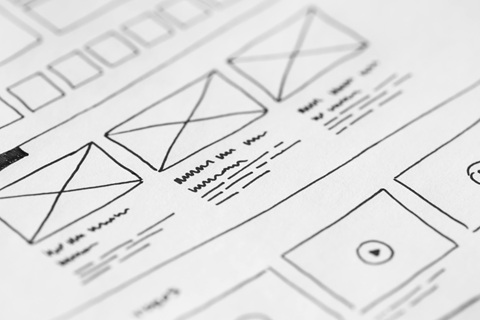
Wealth platforms are becoming increasingly powerful — but with power comes a subtle, often invisible cost: cognitive load. Every additional feature, toggle, or decision point consumes mental bandwidth. While most systems are designed with functionality in mind, very few consider how the user experiences that functionality under pressure. When you multiply dozens of screens, hundreds of data points, and conflicting workflows, the result isn’t efficiency — it’s fatigue.
For wealth managers, client relationship teams, and operations professionals, decision fatigue is real. The brain can only process so much information before it begins to default to heuristics, shortcuts, or even avoidance. In wealth management, those shortcuts can lead to risk exposure, compliance blind spots, or missed opportunities. And the worst part? Most of it is preventable — if the systems were designed to think like humans, not machines.
Complexity isn’t just an inconvenience; it’s a silent tax on performance. A platform may have every feature under the sun, but if the user can’t access it without hesitation or second-guessing, that functionality is effectively wasted. In high-stakes environments, clarity and immediacy win — not the depth of the configuration menu.
Not all friction is visible. Sometimes, it’s the interface itself that quietly undermines the user. A wealth manager toggling between six tabs to answer a client question isn’t experiencing power — they’re navigating a minefield. And yet, many platforms still confuse complexity with sophistication, overengineering the experience in ways that break mental flow and erode trust.
The issue isn’t user capability — it’s design misalignment. When a system requires users to memorize paths, remember exceptions, or keep mental maps of where things are buried, the experience becomes disjointed. This creates anxiety, hesitation, and error-prone behavior — particularly in fast-moving markets or during client interactions. A good platform should guide, not demand recall.
In practice, most user mistakes stem from poor mental modeling, not incompetence. Users don’t misunderstand because they’re untrained — they misunderstand because the system failed to reflect how they think. UX isn’t just about design aesthetics; it’s about cognitive alignment with the person at the keyboard.
There’s a false dichotomy in platform design: either you’re simple or you’re powerful. But great systems find a third path — cognitive simplicity with functional depth. That means keeping the interface clean, predictable, and intuitive, even when what’s underneath is complex. It’s not about dumbing things down. It’s about elevating clarity.
Good design hides the wires. The user sees only what’s necessary for the task at hand — no more, no less. Advanced logic can exist behind the scenes, but users should never be forced to decode workflows or interpret vague labels to get there. That’s the essence of reducing cognitive load: removing the need to think about how to think.
Too often, platforms add features without thinking through interaction friction. Dropdowns become forests. Filters become puzzles. Dashboards become libraries. When every element is competing for attention, none of them win. Simplicity isn’t a lack of features — it’s the absence of unnecessary cognitive burden.
A portfolio manager doesn’t think in tabs. They think in flows: What’s the client context? What changed since last quarter? Is this portfolio aligned with the model? Every time a user must exit that flow to find a button, interpret a setting, or re-orient themselves, momentum is lost. And in wealth management, momentum is time — and time is opportunity.
The most effective tools are the ones that mirror the user’s thinking patterns. That means grouping relevant information together, pre-emptively surfacing insights, and minimizing screen-switching. It means having layouts that adapt to the conversation, not the other way around. Most importantly, it means respecting the user’s cognitive bandwidth as a finite resource — not something to be consumed freely.
Great UX doesn’t interrupt thought — it extends it. The goal isn’t to impress with layers of capability. It’s to vanish behind the user’s expertise, letting them operate with confidence and speed. If a system introduces friction during thinking time, it’s already failing.
Every click is a question. Do I need this? Will this break something? Should I ask for help? That’s cognitive load in action. Platforms that prioritize clarity reduce those questions. They guide users toward insight rather than trapping them in configuration mazes. They reward strategic thinking by making tactical execution intuitive.
Wealth platforms should be designed not just for interaction, but for thought. They should reduce the cost of exploration and the penalty of experimentation. That means better defaults, inline help, smart pre-filtering, and adaptive layouts based on role or task. Every design choice should ask: does this support or distract from the user’s strategic goals?
Simplicity is a discipline, not a deficiency. By shifting focus from features to flow, systems can become less intimidating and more empowering. Because when users stop struggling with the interface, they start thinking like experts again — and that’s where value is created.
In a world where functionality often overwhelms usability, the platforms that win are those that reduce mental drag. Power is not in the number of toggles — it's in how fluidly a professional can move from thought to action. Cognitive load is no longer a UX concern — it’s a performance issue.
As wealth platforms evolve, so must our expectations. We should ask not just what a system can do, but how much it asks from the user to do it. We should expect software that understands context, reduces hesitation, and speaks the language of decision-makers, not developers.
Pivolt is built with this philosophy at its core — delivering enterprise-level depth with intuitive surface simplicity. Every layer is designed to think with the user, not for them. Because real intelligence isn't about impressing with complexity. It's about empowering with clarity.